Few artists can single-handedly sell a game like Vincent Dutrait. Simply showing off his next cover is enough to get people interested without knowing anything about more important matters, like gameplay, for example. His newest work, AFTER US, leapt onto the scene with a gorgeous, evocative cover and cool theme (a post-human world run by apes), and it stood out even amongst an increasingly crowded nature aesthetic. As more details leaked out and reviews trickled in, it became the latest (and perhaps the ultimate) representation of one of tabletop gaming’s most divisive genres: the modern engine-builder.
It’s difficult to discuss this genre because there isn’t a true unifying definition. Nearly every modern Euro game, particularly those that use a lot of cards, have some degree of engine-building to them because players improve their capabilities over time. I personally disagree with the common description of ARK NOVA as an engine builder; it’s a tableau-builder, certainly, but players don’t have access to wild chains nor can you manually activate previously played cards like in WINGSPAN, EARTH, or EVERDELL. For my money, the modern engine-builder can be traced back to two sources: TERRAFORMING MARS and SPLENDOR. While the two differ in complexity, both involve using a tableau of cards to generate resources, acquire more cards, and improve future actions by decreasing costs or triggering effects. Proponents enjoy firing off crazy combos and replay-value provided by a huge deck to play with, while detractors bemoan the devolution into efficiency puzzles and a lack of interaction.
AFTER US is the most recent example of a lighter engine-builder. Players simultaneously draw four cards depicting various primates from their decks, rearrange them to gather various resources, trade those in for better ape cards, then repeat the process until someone gets 80 points. It’s easy to explain and play, the simultaneous action selection cuts downtime, and did I mention how gorgeous it is?
Sadly, the game is not without drawbacks, many of which feel like the natural endpoint of its genre’s worst tendencies. One of the biggest trends in modern engine-building is the enormous deck of cards, over 200 in some cases. It looks impressive to have that many different animals, projects, birds, or fauna, but the reality is that many of them work quite similarly to one another, just with slight tweaks like different continents. It creates a lot of overhead to teach all the symbols and abilities, especially when many probably won’t show up. Furthermore, how can so many options be playtested and balanced properly? How do you get the cards you need? It’s not fun to draw through the deck looking for what you want. That’s fine in a lighter game like TICKET TO RIDE, but not as fun in something more complicated and intricate.
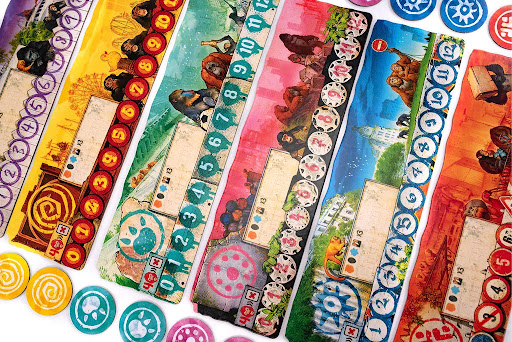
Those that do not like the lack of control over what cards they get will have an aneurysm with AFTER US. Each of the apes has a predilection towards something; the orangutans give batteries, the chimps let you copy abilities, etc. However, when you acquire a new ape card, you pick one off the top of its pile; you don’t get to see what it actually does. Then again, with the way the cards are laid out, seeing what the card was wouldn’t help you. The fun of a deck-builder and engine-builder is building up your deck/engine over time by picking out combos and synergies, but that’s not possible in AFTER US; you literally have to make due with the cards you’re dealt with only the barest input from you.
Old-school Euro players take beef with the prevalence of player-boards in contemporary tabletops. To them, they are emblematic of games where players only have to care about themselves without ever looking at what their opponents are doing. At that point, why even have opponents? Just play solo. Of course, not everyone likes interaction, seeing it as mean and anathem to fun and feeling overloaded if they have to take into account their opponents in addition to themselves. I generally carry the former view, but I understand the frustration of lame “take-that,” like the UNO Draw 4 card. Interesting interaction that requires careful timing and out-maneuvering, like PUERTO RICO, is like a suspense film that constructs terror from a mastery of atmosphere, sound, and cinematography. Boring interaction and take-thats are like a jump scare-filled snooze fest that feels like it’s filling out a studio mandate and turns people off from any form of horror because they assume that’s what it all is.
Player-boards and personal tableaus can be found in many games, of course, but they are universal in engine-builders. Games in this genre have tried to add interaction with varying degrees of success. TERRAFORMING MARS and ARK NOVA have take-that cards that steal money or other resources. These two and WINGSPAN feature public objectives that everyone competes for, forcing players to pay slightly more attention to everyone else to keep track of how many nested birds or science tags are in play. SPLENDOR and its successor use open drafting, where players take from a pool of resources and therefore might take something that other people wanted. However, open drafting counting as interaction has come under scrutiny recently, with detractors claiming it is often accidental; see this video and long thread for evidence. Furthermore, some of these games allow you to turn off the interaction. The attack cards in ARK NOVA feature an alternative mode that turns them off, and the objectives in WINGSPAN can be turned into thresholds that everyone can get rather than something people compete for.
I say all this to emphasize how, even in a genre relatively lacking in interaction, AFTER US stands out by having next to none. During the final phase of each round, a player may spend two resources to copy the action disc of another player. That’s it. Otherwise, there is no reason at all to care or pay attention to other players. There is not even any incentive to pay attention to how many points they have, because what could you even do to affect them? “Multiplayer solitaire” is a phrase thrown around too much for my liking, but it’s applicable here.
One of the most common complaints I’ve heard of lighter engine-builders, such as AQUATICA and IT’S A WONDERFUL WORLD, is that they end too quickly before you get anything going. It takes skill to know when to turn the corner in these games, to switch from producing coins or resources to actually going for points, and missing that transition can be costly. These lighter games can instead feel like efficiency puzzles, where the winner is not the one who built the coolest engine but who sees the path of least resistance to victory. In other words, they do not reward you for actually building a cool engine, and someone who gets the right cards can end the game in a rather unsatisfying way.
Now, imagine how all that is magnified in a simultaneous action selection game with no tools to affect or even factor in what your opponents are doing. Instead, after you’ve finished your turn along with everyone else, you sit and watch as they move their point trackers up, potentially far past yours. You have no way of knowing how they did it, you didn’t even see the exact cards they acquired, because you only know the apes they took. I don’t play games to win them, but I’d at least like to know how somebody beat me, and that bare minimum of info is hard to obtain in AFTER US.
Tom Vasel of Dice Tower and Quentin Smith of Shut Up and Sit Down, two of the biggest names in board game reviews, teamed up for a video where they gently prodded each other about differing tastes. One of the longest sections was Quentin discussing his mediocre reception of WINGSPAN, CLANK! and THUNDERSTONE, one engine-builder and two deck-builders. He claimed:
“Sometimes the way you get birds in WINGSPAN and the way you build a deck in CLANK!, to me sometimes feels like those games are leaning on the psychological dopamine hit of getting cards, getting an engine, of getting stuff, you know in CLANK! I got that cool card, during WINGSPAN I got an albatross, and I think those games can lean on that stuff so much that sometimes there isn’t even much of a game there.”
The entire time he was speaking, I was thinking: well, why isn’t the collecting aspect considered a game? Why does there have to be anything more than that? I completely understand if the experience is unfulfilling, but to say there is not much of a game there is ludicrous. Despite how many detractors have emerged to scoff at the likes of EARTH or ARK NOVA, there is no denying their success and it’s easy to see their appeal; building stuff, especially building something that makes further building and collecting easier, is fun!
Even if Dutrait’s artwork was taken out, AFTER US deserves attention for being the natural endpoint of engine-building trends. There is close to zero interaction, no way to know what exact cards you are getting, with the cards all basically interchangeable, and no way to affect or even understand your opponents. It’s a barometer to judge your tolerance for the genre, how much you’ll weather to get the psychological dopamine hit. The core puzzle of moving the cards was enough for me at first, but that hit grew less powerful over time as it paled in comparison to its predecessors. An evolution, sure, but not an improvement.


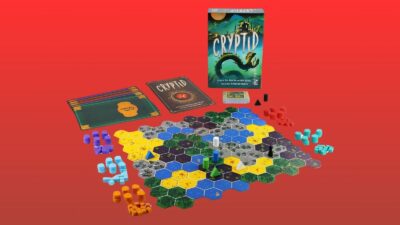
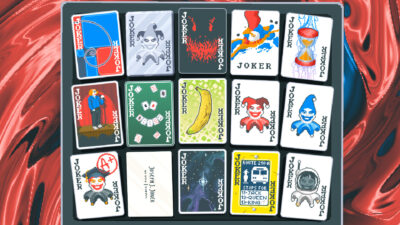
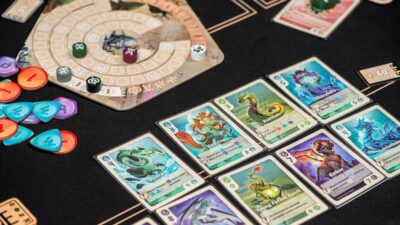
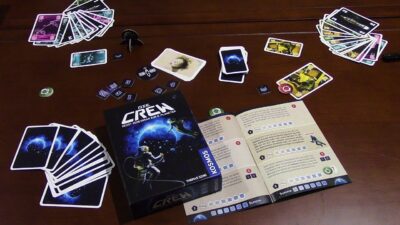
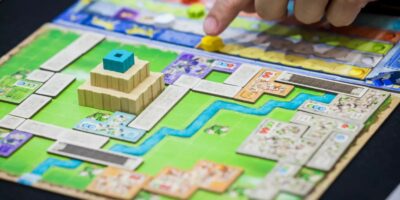


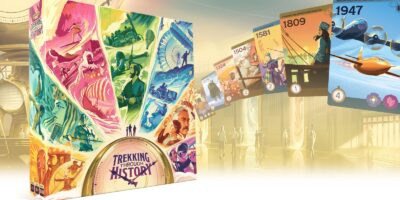




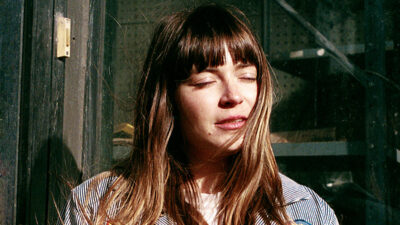

Comments